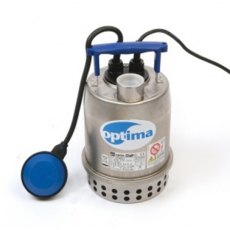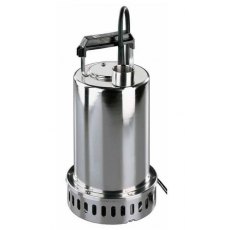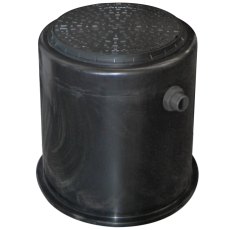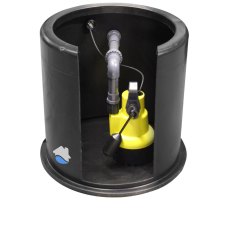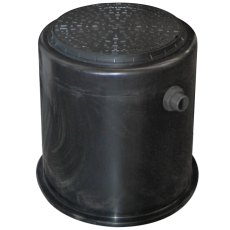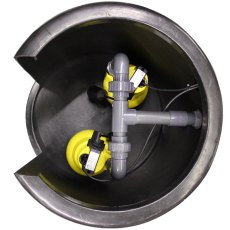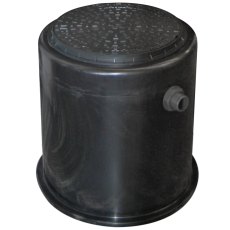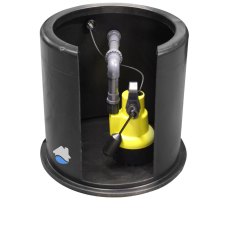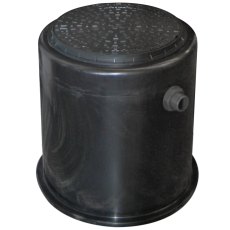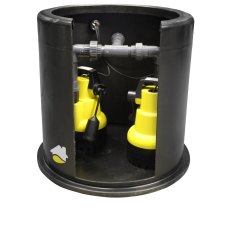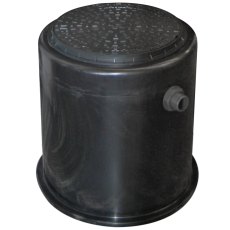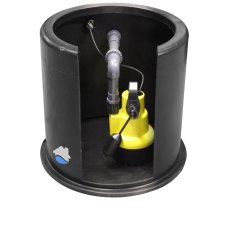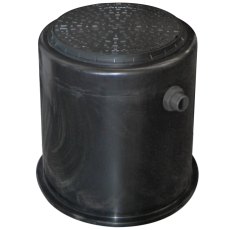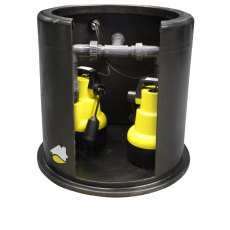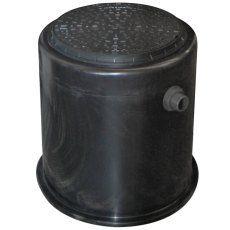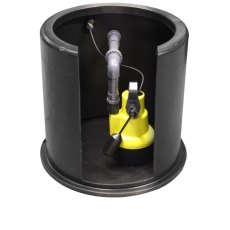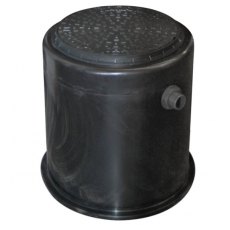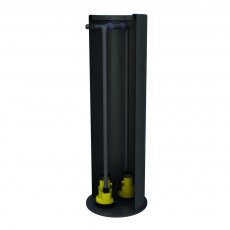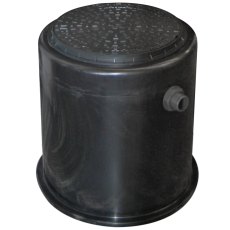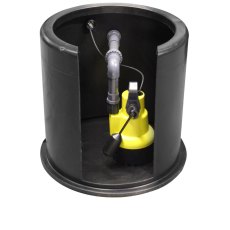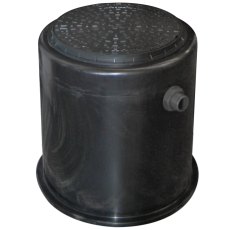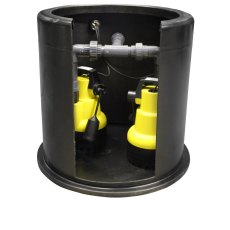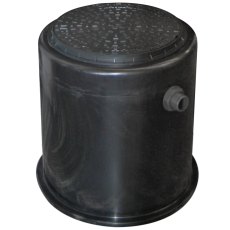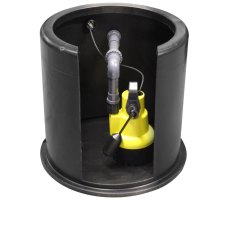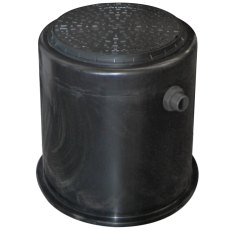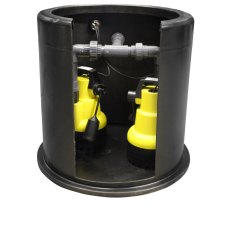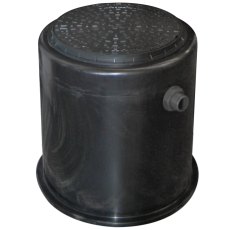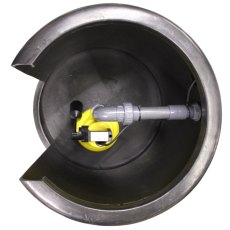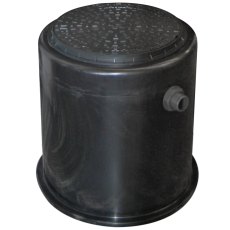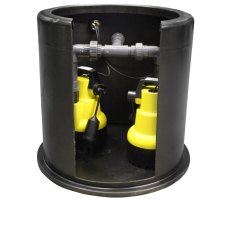Basement Drainage Pumps
Our Basement Drainage pumps are suitable for Removing Grey Water From: Final Effluent from Sewage Treatment Plants, Drainage of Cellars & Basements, Sinks, Showers, Kitchens & Dishwashers. Our Pump systems are designed to have a 24 hour storage capacity, and comes with a submersible pump with 10mm solid handling for peace of mind. We can offer just the pump on its own or within a pump system in a variety of capacities.
Basement Drainage Pumps FAQs
How long do basement drainage pumps last?
With good and regular maintenance, your basement pump should last for many years. There are several factors that will affect the longevity of your basement drainage pump. Regular and intense use will affect the lifespan of your basement pump, so if you have a below ground property with a high level of water ingress, your basement drainage pump is likely to be in a state of constant use. Like any machinery, the more it is in use the quicker its lifespan will decline. Equally, if your basement has been fitted with a pump that is too small, the pump will have to work much harder, shortening its lifespan. It’s also important that your basement drainage pump is installed correctly — if the motor doesn’t engage properly or the connection to the piping isn’t quite right, you could find that your pump works itself to an early grave. A lack of maintenance can also negatively affect the lifespan of your basement pump so keep a regular maintenance schedule to ensure your pump stays healthy.
Are basement drainage pumps different to sump pumps?
Sump pumps are the same as basement drainage pumps. They are used to remove water that has accumulated in a water-collecting basin and then pumped to the nearest drainage point. Sump pumps are commonly found in basements that are below ground level.
How does a basement sewer pump work?
A basement sewer pump usually needs to be installed then your sewer line level is below the main sewer system. The pump collects the wastewater from your basement bathroom or toilet into a tank and, when the sewer pump is turned on, the motor rotates creating a centrifugal force that pushes the wastewater into the impeller. It is then discharged into the main sewage network or a septic tank.
What does a sump pump do?
A sump pump serves as a crucial guardian for your home, especially in areas prone to flooding or excessive moisture. Nestled in the lowest part of your basement or crawlspace, the primary function of a sump pump is to prevent water accumulation and potential flooding. It achieves this by actively collecting excess water that could seep into your home's foundation and directs it away from the property.
The heart of the sump pump system is the sump pit, a specially constructed basin that collects water. When the water level in the pit reaches a certain height, a float or pressure sensor triggers the pump into action. The pump then swiftly removes the water from the pit and directs it away from your home through a discharge pipe, usually leading to a storm drain or a designated area that prevents water from re-entering your property.
Beyond preventing flooding, a sump pump is a valuable defence against mould and mildew. By swiftly removing excess water, it reduces the risk of moisture seeping into your home's foundation and creating a breeding ground for these harmful substances. This not only protects your property but also promotes a healthier indoor environment for you and your family.
Do sump pumps use lots of electricity?
The electricity consumption of a sump pump is a common concern for homeowners, but the actual usage can vary based on factors such as pump type, capacity, and frequency of operation. Generally, sump pumps are not known for consuming a significant amount of electricity. Submersible pumps, which are more commonly used in residential applications, are typically energy efficient. The power consumption of a sump pump is measured in watts. A typical submersible sump pump might use around 500 to 750 watts. However, it's crucial to note that sump pumps are designed to operate intermittently. They kick into action when the water level in the sump pit rises to a certain point, usually triggered by heavy rainfall or melting snow. Once the water is pumped out and the pit is clear, the pump shuts off. This on-and-off cycle helps minimise continuous electricity consumption. If you live in an area prone to heavy rainfall or have a high-water table, your sump pump may operate more frequently. However, for many homeowners, the pump might only run a few times a month or even less, resulting in modest electricity usage. Regular maintenance, including cleaning the pump and ensuring proper functioning of the float switch, also contributes to energy efficiency by allowing the pump to operate optimally.
Should a sump pump run all day?
No, a sump pump should not run continuously throughout the day. Sump pumps are designed to operate intermittently, turning on only when the water level in the sump pit rises to a certain point. Continuous operation may indicate a problem with the pump, the float switch, or an unusually high water inflow that requires investigation.
A constantly running sump pump can be a sign of an overwhelmed drainage system, a malfunctioning float switch, or a pump that is too large for the intended application. If your sump pump runs continuously, it's crucial to assess the situation promptly to prevent potential issues such as motor burnout, increased electricity consumption, and unnecessary wear and tear on the pump components.
If you notice that the pump is running more frequently than usual or appears to be struggling to keep up with water inflow, it's time to investigate. Check for any visible leaks, assess the condition of the pump, and ensure that the float switch is functioning correctly. Additionally, examine the drainage system and discharge pipe to confirm that water is being directed away from your home effectively. Remember, a well-maintained and properly functioning sump pump is crucial in safeguarding your home from potential flooding and water damage.

 Login
Login